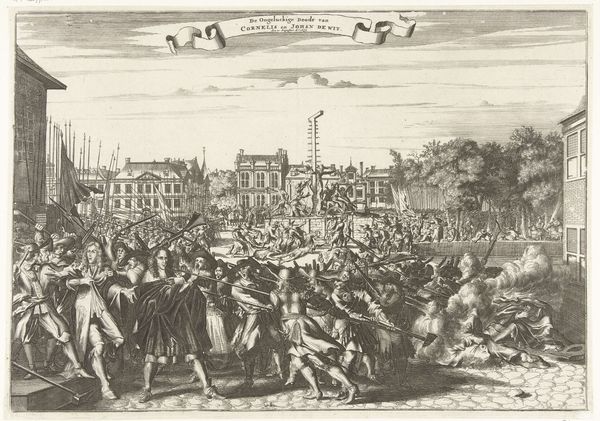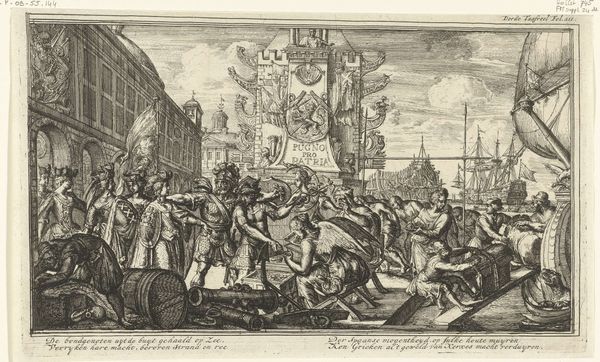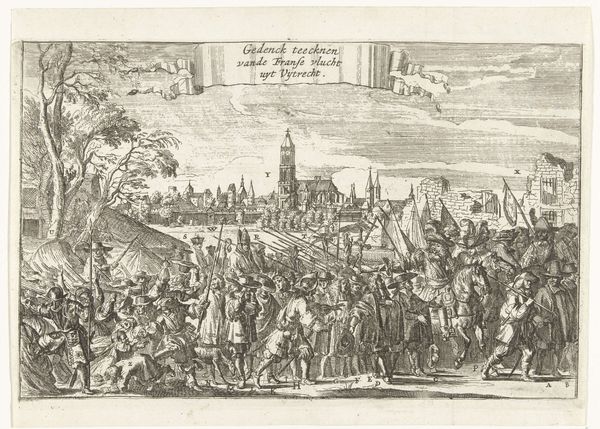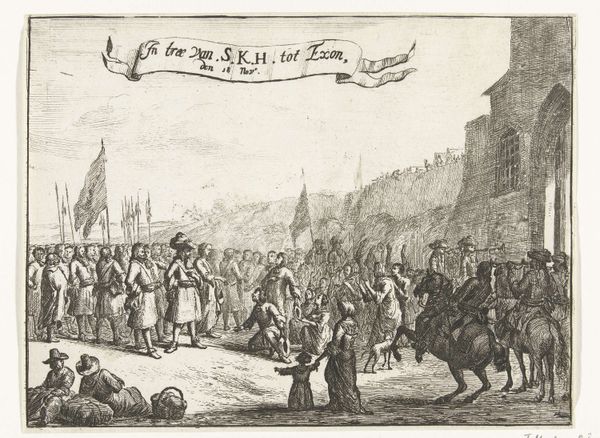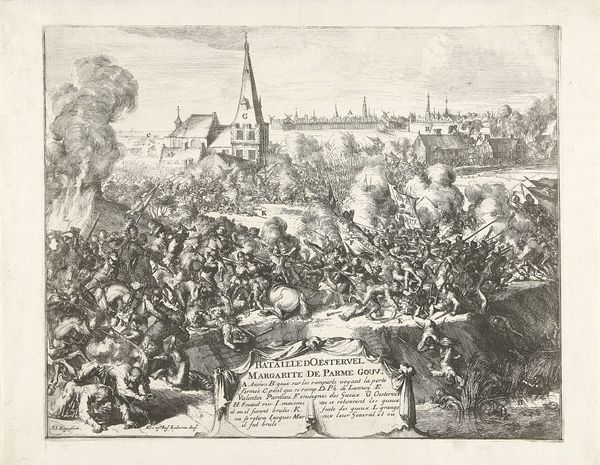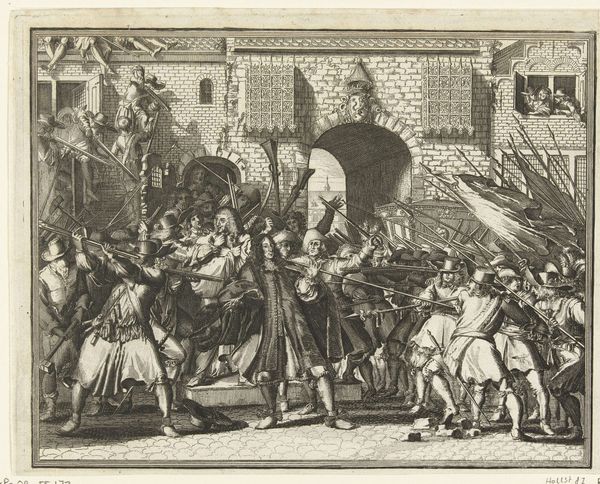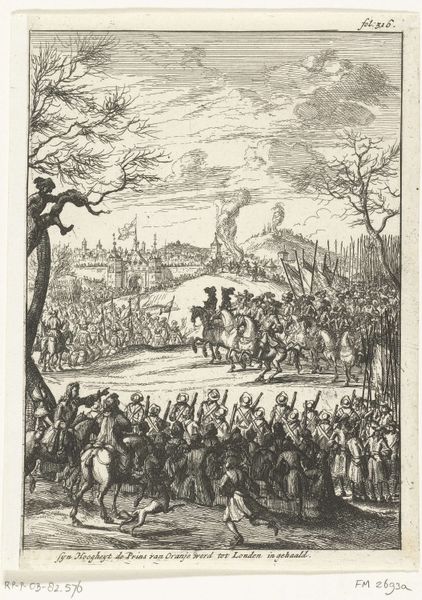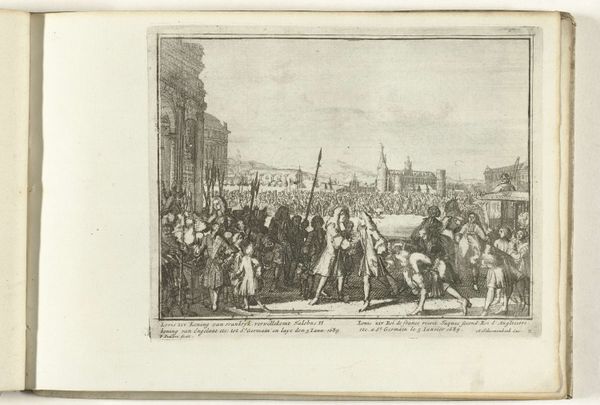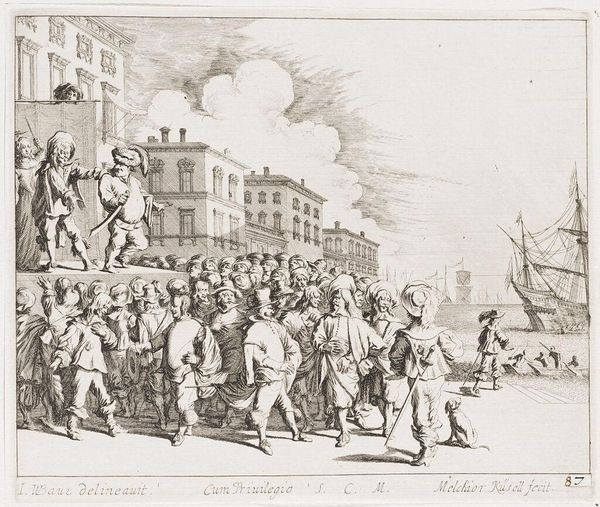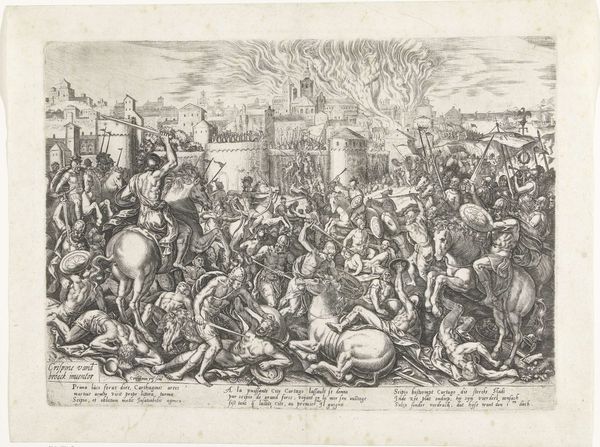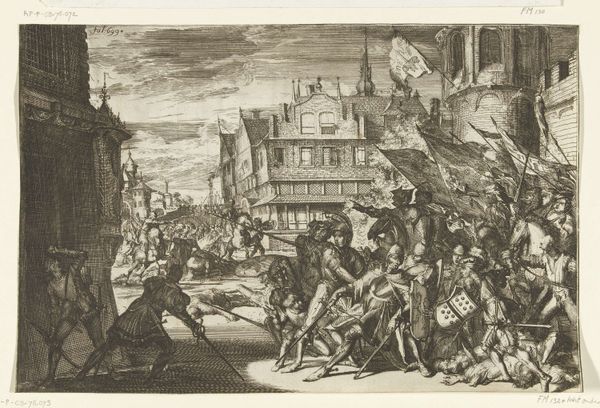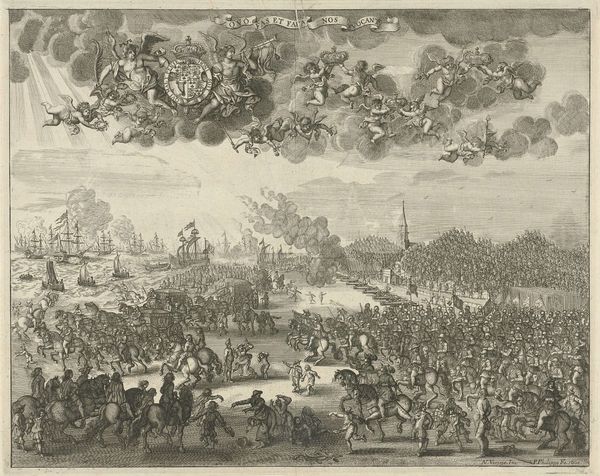
engraving
#
narrative-art
#
baroque
#
pen drawing
#
figuration
#
cityscape
#
history-painting
#
engraving
Dimensions: height 180 mm, width 271 mm
Copyright: Rijks Museum: Open Domain
Editor: This engraving, titled "The Murder of the De Witt Brothers," likely made between 1674 and 1676 by an anonymous artist, is a chilling depiction of a historical event. The sheer chaos of the scene is striking, the mob violence almost leaping off the page. What kind of historical context can illuminate this brutal scene? Curator: It is indeed a stark representation. This work speaks volumes about the socio-political climate of the Dutch Republic during the Rampjaar, the "Disaster Year," 1672. The De Witt brothers, Johan and Cornelis, were prominent statesmen, but faced growing unpopularity amidst war with England, France, and several German states. This engraving shows us not just a murder, but a public execution fueled by political unrest and propaganda. Note how the artist depicts the frenzied crowd and the brutalized bodies. How do you think this imagery functions politically? Editor: It feels like a warning, or perhaps a piece of propaganda itself, solidifying a particular narrative. The level of detail given to the violence almost seems celebratory, feeding into the fervor. Was art like this common during that time, used as a tool for political messaging? Curator: Precisely. Engravings like this one were easily reproducible and widely disseminated. They played a crucial role in shaping public opinion and solidifying the victors’ narrative. Visual representations of power, justice, and even revenge were critical tools for establishing legitimacy in the eyes of the public. Do you see any specific details that suggest a particular political slant? Editor: The placement of the bodies feels significant, almost like trophies displayed for the jeering crowd. And the exaggerated expressions on the faces of the mob definitely demonize them, despite the fact that the act had some degree of popular support. It definitely creates an impression of uncontrolled chaos. Curator: It’s fascinating how an image can capture the turbulence of an era and simultaneously be a tool within that turbulence. Examining works like these really emphasizes the intersection between art, power, and public perception. Editor: Absolutely, I now realize that what first appeared to be a chaotic historical depiction is, in fact, a carefully constructed piece of political communication. It really highlights how images can shape history.
Comments
No comments
Be the first to comment and join the conversation on the ultimate creative platform.
